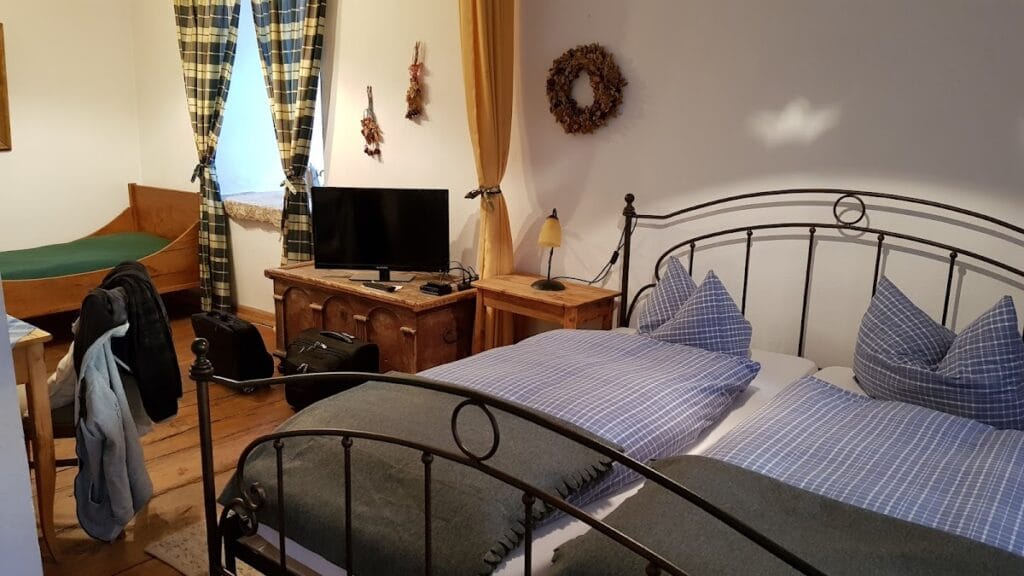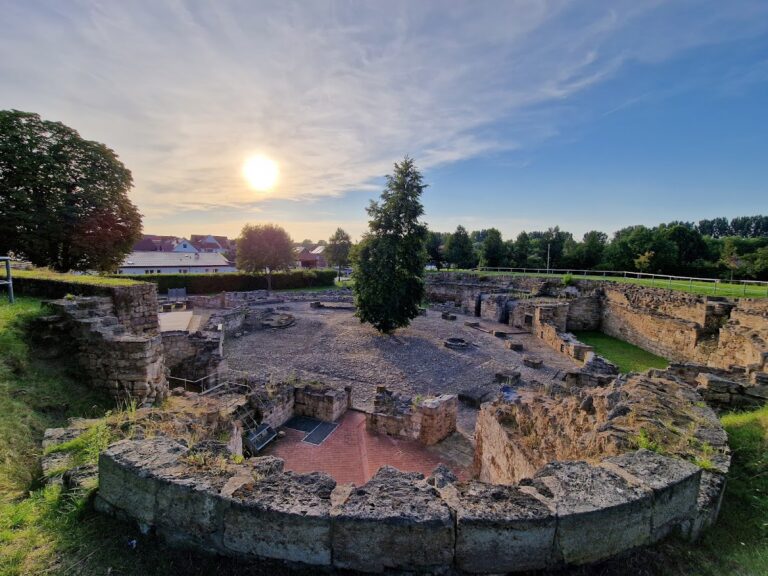Burg Großfurra: A Historic Water Castle in Sondershausen, Germany
Visitor Information
Google Rating: 4.7
Popularity: Low
Google Maps: View on Google Maps
Official Website: www.burg-grossfurra.de
Country: Germany
Civilization: Medieval European
Remains: Military
History
Burg Großfurra is located in the municipality of Sondershausen, Germany. It was originally constructed by the Thuringian landgraves during the 11th century as a water castle, intended to control the Wippertal valley to the west of Sondershausen.
The castle is first recorded in 1198 as the property of the von Furra family, a knightly lineage. By 1249, this family had become vassals under the Margraves of Meißen, and by 1276, they were noted as serving the Honstein family as their overlords. When the von Furra line ended in 1332, ownership of the castle was divided into two parts: an eastern section known as the Vogtei, and a western noble fief. These portions were granted to different noble families over time.
Beginning in 1425, the von Wurmb family gradually acquired both sections, consolidating control and ruling the castle and its lands for more than five centuries. During the Peasants’ War of 1525–1526, the von Wurmb residents were briefly forced to flee by revolting peasants. However, after the uprising was suppressed, they regained possession of the castle. Over the centuries, the fortress evolved from a primarily protective structure into a defensive stronghold aimed at deterring peasant rebellions. Despite challenges including multiple renovations, outbreaks of plague, and involvement in various wars, the castle remained largely intact until the conclusion of World War II.
In April 1945, American artillery caused damage to the castle’s main tower, known as the bergfried. Soon after, Soviet forces took control of the region in July 1945. The von Wurmb family was expropriated without compensation and expelled from the property. The castle was plundered and transferred to state ownership. It was repurposed to serve as a school, a kindergarten, and housing for refugees. During this turbulent time, the family’s valuable library was lost. Additionally, the castle’s estate buildings and surrounding lands were nationalized. The castle’s extensive defensive wall, which stretched approximately 500 meters, was dismantled, with its stones reused for new construction projects. However, the von Wurmb family’s burial chapel, containing a crypt and sarcophagi, was converted into a Catholic church, a transformation that ensured its preservation through these difficult years.
Following German reunification in 1990, the castle stood empty and continued to deteriorate due to the high costs associated with restoration. Between 1996 and 2004, Helmut Pohl, a businessman originally from Bavaria, purchased and restored the castle complex according to heritage protection standards. Today, the buildings serve as his residence and house the headquarters of his company.
Remains
Burg Großfurra’s layout reflects its origins as a moated fortress fortified with earthworks. At its center is a substantial two-winged building that forms the core of the castle. One wing rises two stories high, while the other stands three stories tall and features a timber-framed upper level, demonstrating a blend of stone and wood construction typical of the period.
A distinctive architectural highlight is the round bergfried, or main tower, integrated into the castle complex. Rising 20 meters in height with a diameter of 10 meters, the tower’s thick walls provide a commanding presence. It is crowned by a domed roof, a feature that has become emblematic of the castle. Though artillery fire in 1945 inflicted damage on this tower, notably resulting in a long crack visible by 1990 and general deterioration of roofs, walls, and windows, it was subsequently restored during the late 20th-century renovation.
Originally, the castle was surrounded by a defensive wall approximately 500 meters in length. This curtain wall served to protect the interior buildings but was demolished after 1945, with its stones repurposed as building material for nearby construction. The loss of this wall significantly altered the castle’s defensive character.
The grounds also once included a castle park, initiated as a pleasure garden in the 17th century. During the mid-19th century, this garden was redesigned in the style of a landscape garden, reflecting changing tastes in garden architecture. After World War II, parts of this park were built over, and many of its mature trees were cut down, diminishing the original garden’s extent and appearance.
One remarkable surviving feature is the von Wurmb family burial chapel. This structure contains a crypt with sarcophagi and was adapted into a Catholic church following the upheavals of the mid-20th century. This religious conversion proved instrumental in safeguarding the chapel from the neglect or destruction experienced by other parts of the castle complex.
Together, these remaining elements—core buildings, bergfried, modified gardens, and the burial chapel—offer a tangible record of Burg Großfurra’s evolving role, reflecting its military, residential, and religious functions across nearly a millennium.







